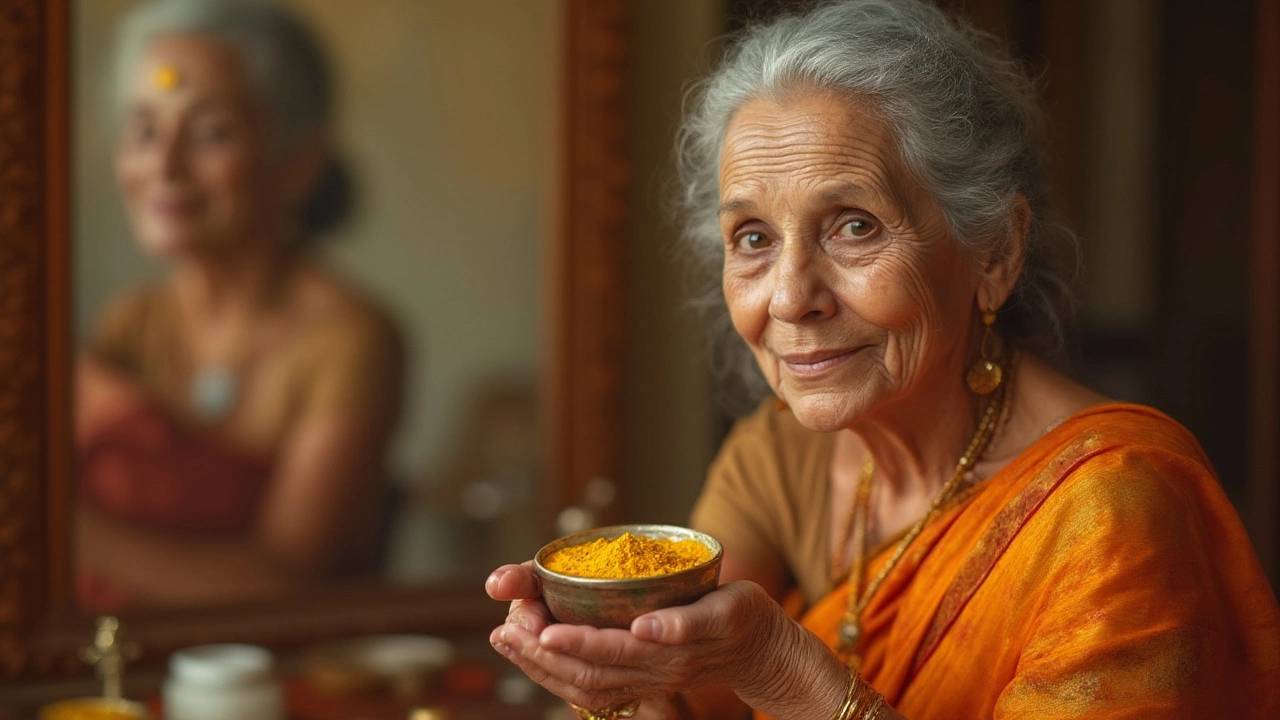-
14

How to Get Flawless Skin: Proven Tips and No-Nonsense Skin Care Guide
They say your skin is your biggest flex. But some mornings, staring at my own reflection, I wonder if Milo the dog has better skin than I do. I’ve had breakouts before big job interviews, random dry patches on humid Sydney days, and a forehead that could sometimes outshine my phone’s flashlight. If you’re on a quest for flawless skin, you’re not alone—more people search for those two words each month than 'gym memberships' and 'diet plans' put together. So what’s the actual secret? Is it really those exotic $300 creams, ten-step routines, or just good genes? Turns out, the answer is a mix of smart choices, a dose of science, and a bit of patience. Let’s dig into what really matters for getting the kind of skin that draws compliments and feels amazing to the touch.
What Actually Makes Skin Flawless?
This obsession with perfect skin isn’t just about vanity. Healthy, clear skin boosts your confidence, helps you look younger, and can even signal that you’re eating well and taking care of yourself. But “flawless” gets thrown around a lot, so let’s break it down. Flawless skin is usually smooth, even-toned, free from visible breakouts, not too oily or dry, and with a healthy glow. Studies show that your actual skin condition comes down to a few things: genetics, hormones, habits, and what’s happening in your environment. Since you can’t rewrite your DNA (yet), it pays to focus on what you can control.
First up, hydration. Nearly 60% of your body is water, and your skin is no exception. Dehydrated skin shows up as dullness, fine lines, and roughness. Most adults should aim for around 2-3 liters of water a day, especially if you’re hitting those Bondi beach walks or working up a sweat in the gym. It’s basic—but so many people miss this.
Sun protection is non-negotiable, especially if you live in sunny Australia—UV damage is real, and skin cancer is alarmingly common here. The Australian Cancer Council found that two out of three Aussies will be diagnosed with skin cancer by age 70. Sunscreen isn’t just for the beach. You need it all year, rain or shine, because UVA rays sneak through clouds and windows. Grab a broad-spectrum SPF 30 or higher and make it the last step in your morning routine, right after moisturizer. Reapply every two hours if you’re outdoors. A scary stat: 90% of visible ageing (hello, wrinkles and sunspots) comes from UV exposure. That’s something you can absolutely control.
Now let’s talk about cleansing. It’s weird, but over-washing can wreck your skin as much as forgetting to wash. Too much scrubbing strips your natural oils, which makes your body panic and ramp up oil production—cue clogged pores and breakouts. Wash your face twice a day—morning and night—with a gentle, fragrance-free cleanser. After workouts, a rinse with water to remove sweat is fine. Milo doesn’t get a daily bath, and neither should your face get scrubbed raw.
Speaking of breakouts, don’t attack every pimple with strong spot treatments. Dermatologists warn that picking or squeezing is the fastest way to turn a tiny bump into a red, lingering scar. Instead, treat pimples with a dab of benzoyl peroxide or salicylic acid, but don’t overdo it. Hands off the face, always. I used to zone out during Netflix and absentmindedly touch my skin—bad move. Your phone’s surface has more germs than a public toilet seat.
Healthy skin loves routine. Consistency beats expensive products every time. You don’t need a science degree to build a simple routine—just these basics: clean, moisturize, protect, and treat. Avoid constantly switching up products. Our skin likes stability more than we think. When trying something new, give your skin at least a month to show results. According to dermatology research, skin takes about 28 days to renew itself. If you’re jumping from serum to serum nightly, you’ll never know what’s working (or what’s not).
Nutrition makes a huge difference, and it’s not all about “eating clean.” Skipping out on healthy fats—like those in nuts, avocados, and salmon—can make your skin dry and dull. Vitamin C, found in citrus fruits, kiwis, and strawberries, boosts collagen. Zinc, found in pumpkin seeds and eggs, is a secret weapon for those who get breakouts. And gut health is finally getting the respect it deserves; new Australian studies show people with more ‘good’ gut bacteria tend to have fewer skin problems. Include yogurt or fermented foods a few times a week, and you’ll likely see a subtle clarity in your skin over time.
Check out this helpful table breaking down simple habits and their skin benefits:
| Habit | Skin Benefit | Recommended Frequency |
|---|---|---|
| Drinking water (2-3L) | Hydrated, plumper skin | Daily |
| Using sunscreen SPF 30+ | Prevents premature ageing and sun damage | Daily/reapply outdoors |
| Gentle cleansing | Removes dirt without stripping moisture | Twice daily |
| Moisturizing | Prevents dryness and supports skin barrier | Twice daily |
| Including healthy fats | Improves skin elasticity and glow | Several times/week |

The Daily Skincare Routine That Actually Works
Let’s get practical. You don’t need to spend an hour in the bathroom each morning. Here’s the real-life routine dermatologists actually use—and recommend to their patients. Adopt this flawless skin routine, and you’ll start noticing changes sooner than you’d think.
- Morning:
- Gentle Cleanser: Wash away sweat and overnight oil with a non-abrasive cleanser. I use a pH-balanced gel that doesn’t leave my skin tight.
- Moisturizer: Go for something lightweight if you’re oily, or a hydrating cream if you wake up dry. Look for ceramides and hyaluronic acid—these restore the skin’s natural barrier.
- Sunscreen: Never skip. If you want a shortcut, some day creams combine SPF and moisturizer, but double-check the protection level.
- Evening:
- Double Cleanse (if wearing sunscreen and makeup): Use a cleansing oil or micellar water to remove SPF and dirt first. Follow with your regular cleanser.
- Treatment: If you use an exfoliant (like a gentle AHA/BHA) or a targeted serum, night is the best time. Only 2-3 times a week—overdoing acids leads to irritation.
- Moisturizer: Night creams can be richer. Your skin repairs itself as you sleep, so this is a good time to try ingredients like retinol (if you’re new, start slow) or niacinamide.
- Weekly:
- Face Mask or Scrub: Pick a hydrating mask or a clay mask for excess oil. Never scrub harshly—gentle motions only.
- Skin Check: Look for new moles, irritations, or changes. Especially in Australia, regular skin checks save lives.
Customize as needed. Your climate makes a difference too. Dry, wintry Sydney winds? Up your moisturizer game. Humid days? Lighter gels win. And yes—your skin’s needs change with age, stress, seasons, even new pets. After Milo joined the family, I had to up my cleaning routine because, believe it or not, pet dander can totally clog pores if you’re prone to breakouts.
Don’t get sucked into influencer hype. The ‘skincare shelfies’ loaded with rows of fancy bottles aren’t necessary. A study in The Journal of Dermatology found that people using a simple three-step routine had just as good results after 12 weeks as those with eight or more products. Save your money for things that matter (like dog toys, or maybe concert tickets). Write down how your skin feels after using new products and check in every two weeks. Patterns tell you what works. If redness, itchiness, or breakouts pop up, it’s probably time to scale back.
Oh, and sleep. The phrase “beauty sleep” isn’t a myth. Skin repairs itself at night, building new collagen and fighting inflammation. Adults need 7-9 hours, but stress, late-night scrolling, or even diet (hello, too much caffeine) can get in the way. Try to make your bedroom a phone-free zone and watch what happens—people see brighter, calmer skin in as little as two weeks after fixing their sleep routine.
If you’re a gym-goer or play sport, don’t wear heavy foundation or concealer when you sweat—it clogs pores, fast. Rinse your face ASAP after workouts. Ever notice breakouts along your hairline or jaw? That’s usually sweat and product build-up. Keep hair gels and styling creams off your skin, and tie back longer hair if you’re prone to breakouts.
As for shaving, razor bumps are avoidable. Use a sharp, clean blade, warm water, and a shaving cream with soothing ingredients (think aloe or chamomile). Always shave in the direction your hair grows—pressing too hard can lead to irritation and ingrown hairs. For the beard crowd, regular washing and beard oil make a surprising difference to the skin underneath. And if your skin feels tight or stings after shaving, switch to a fragrance-free moisturizer immediately. Fragrance is a common cause of allergic reactions.

Beyond Products: Stress, Technology, and Skin Myths Busted
OK, so you’ve got the basics down—but even the best products won’t save your skin if you ignore the stuff that sabotages it underneath the surface. Here are some things most people forget, but they can make or break your results.
Stress isn’t just in your head. Your skin literally “hears” your stress hormones. When you’re anxious or not sleeping, your body produces more cortisol. That throws off your oil production and sparks breakouts or redness. Research out of Sydney’s own University of New South Wales showed that chronic stress leads to slower healing of skin wounds and breakouts. Quick calm-down hacks? Deep breathing, a walk with Milo in the park, or even listening to music you love (yes, it really helps!).
The stuff you can’t see is often the culprit. Your pillowcase, headphones, and phone touch your skin all day. Wash pillowcases twice a week—oil and bacteria build up fast. Wipe down your phone daily. And if you’re working at your laptop all day, remember: blue light from screens can slightly speed up ageing (though less than UV light), so if you’re a screen addict, consider products with antioxidants or a blue-light shield for your devices.
Ever heard these skin myths? First, natural doesn’t always mean safer. Poison ivy is “natural” but you don’t want it on your face. Patch test any new product, especially if you have sensitive skin. Another myth: only people with acne need to care about their skin. The stuff you do in your 20s and 30s can set you up for fewer lines, less sagging, and brighter skin later. And about “detoxing”—your liver and kidneys do most of this work, not some miracle cleanse. But cutting back on junk food and alcohol does help because they cause inflammation that can show up as redness, puffiness, or dullness.
The simple act of smiling more often? It boosts circulation to your face and makes you look more approachable—small but genuine changes really matter. Also, pets do wonders for skin stress. Pet owners have lower rates of skin flare-ups linked to anxiety, and just hanging out or playing fetch with your dog (or cat, or whoever) releases stress-busting chemicals. Even Milo’s short daily walk helps me decompress, and I honestly notice my breakouts calm down when I’m less wound up.
If you’re dealing with persistent skin issues—serious acne, eczema, or sudden rashes—don’t hesitate to call in the pros. A dermatologist can tailor advice and spot problems early, especially important if you’ve got a family history of skin cancer or autoimmune issues. Australia’s healthcare system makes seeing a dermatologist more affordable than you think, and they can set you up with prescription options that make a world of difference.
To wrap it up, perfect skin isn’t about being “picture-perfect” every day—it’s about skin that feels healthy, comfortable, and reflects some good care. Build habits that fit your lifestyle, cut out the hype, and listen to your skin’s signals. Stick with it—your future face (and maybe even your pup) will thank you.